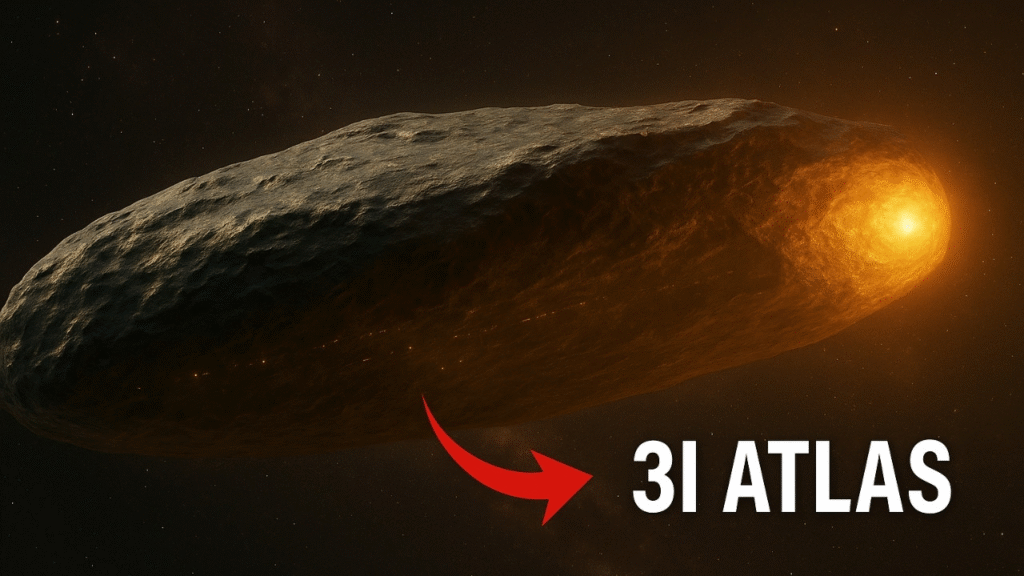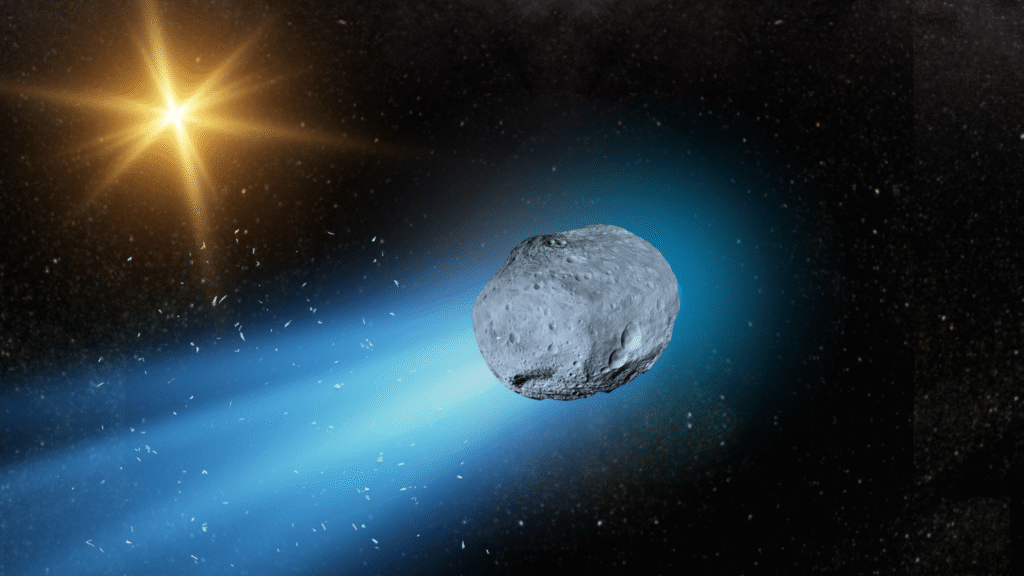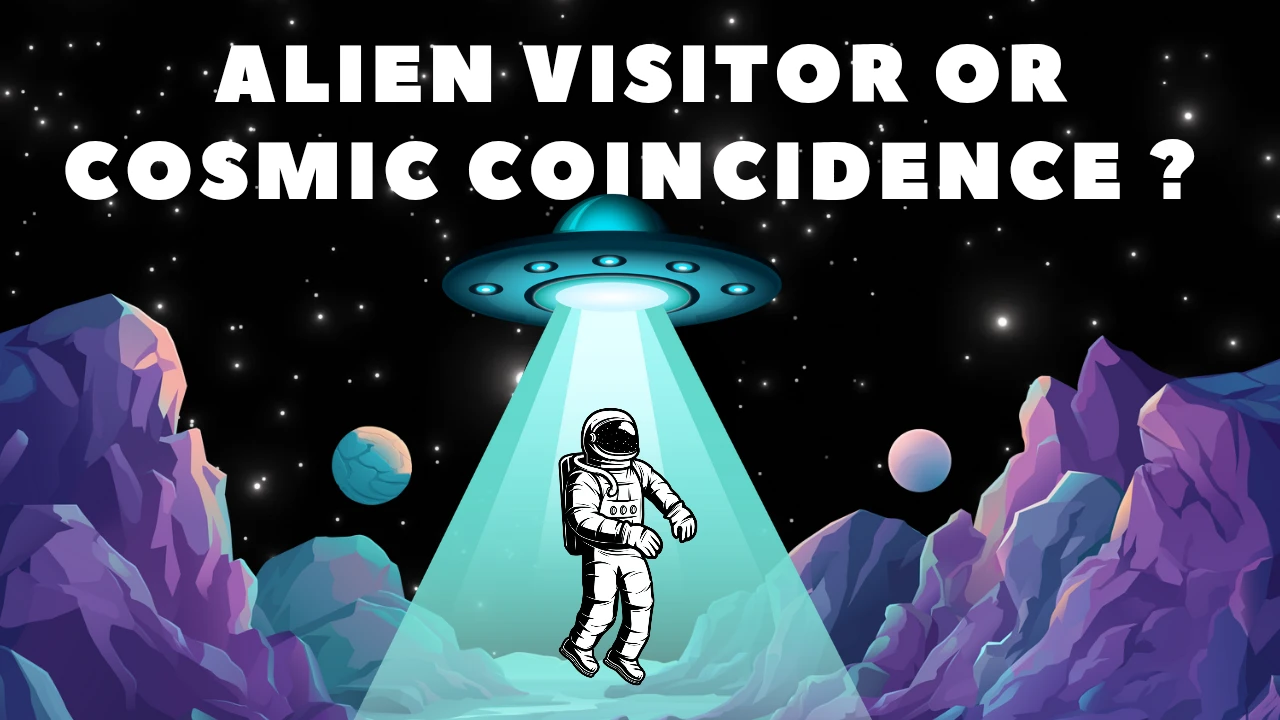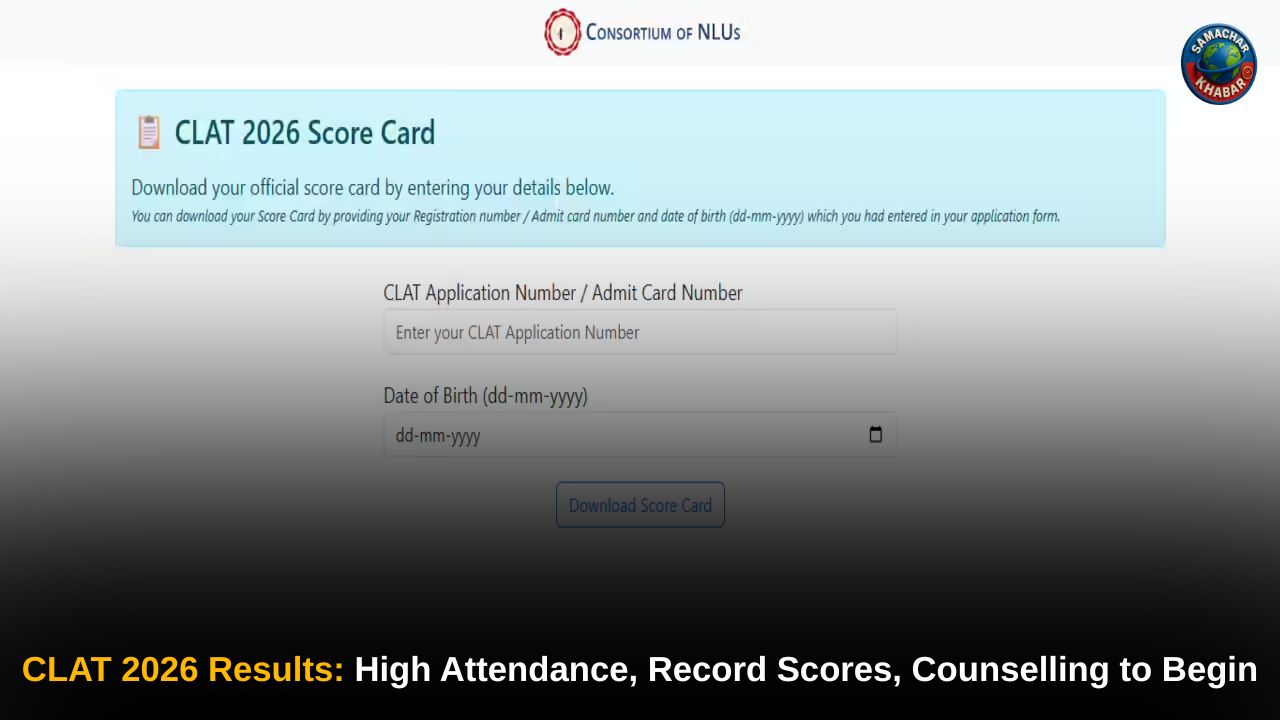Interstellar Object 3I/ATLAS: In July 2025, astronomers discovered 3I/ATLAS the third known interstellar object to enter our solar system which is already provoking intense scientific debate. With a hyperbolic trajectory showing it came from beyond the Sun’s gravitational grip, and a nucleus estimated as large as 5.6 km across, this visitor is a rare opportunity to glimpse material from another star system.
But what has truly ignited controversy are claims by Harvard astrophysicist Avi Loeb, who points to anomalous chemical signatures and a peculiar orbital alignment as possible evidence of artificial origin. Meanwhile, NASA and other scientists urge caution, insisting the object behaves like a natural comet.
Key Highlights of Interstellar Object 3I/ATLAS: Origins, Observations & Theories
- 3I/ATLAS: interstellar origin confirmed : The object is on a highly hyperbolic path, unequivocally identifying it as an interstellar visitor from beyond our solar system.
- Size and speed set records : Early data estimate a nucleus up to ~5.6 km in diameter and velocities of ~60 km/s (≈130,000 mph), making it larger and faster than its predecessors 2I/Borisov and 1I/ʻOumuamua.
- Unusual chemical signatures : Some observers report emissions of gases and compounds uncommon in known comets, such as elevated nickel content, unusual tail directions and anomalous behaviour of the coma. These features fuel suspicion about unnatural origin.
- Avi Loeb’s artificial-origin hypothesis : Loeb posits that the object’s behaviour might reflect purposeful engineering: e.g., an Oberth manoeuvre (using the Sun’s gravity to change trajectory) or mini-probe deployment from a mothership. He places the probability of non-natural origin at 30-40 %.
- Mainstream scientific caution : NASA scientists lead by Tom Statler maintain that all currently observed traits of 3I/ATLAS remain consistent with known cometary physics and that there is no sign of alien technology.
- Upcoming observational window : Currently hidden behind the Sun (solar conjunction), 3I/ATLAS will re-emerge for telescopic study; its behaviour thereafter brightness, tail formation, trajectory changes will be critical to resolving the natural vs engineered question.
3I/ATLAS : Discovery & Interstellar Credentials
The object was first spotted by the Asteroid Terrestrial‑impact Last Alert System (ATLAS) survey telescope in Chile on 1 July 2025, and follow-up archival data confirmed the unusual hyperbolic trajectory pointing to an extrasolar origin.
Observers with the Hubble Space Telescope and ground observatories provided size estimates and monitored the comet’s activity as it approached the Sun. For example, Hubble’s imaging refined the upper diameter estimate to ~5.6 km.

This object joins only two others: ʻOumuamua (2017) and 2I/Borisov (2019), marking it the third documented interstellar object to traverse our solar system.
3I/ATLAS : Peculiar Behaviour & Chemical Clues
As 3I/ATLAS draws closer to the Sun, it is showing unusual characteristics:
- Its coma and tail show orientation and structure that differ from typical cometary physics (for example, jets directed unexpectedly).
- Spectroscopic analysis reveals higher than normal proportions of carbon dioxide and possible presence of nickel and cyanogen, elements/compounds not commonly dominant in solar-system comets.
- Some observers argue that the ratio of nickel to iron (or absence of detectable iron) and the emission of nickel tetracarbonyl (an industrial compound) indicate an artificial origin. These claims stem largely from statements by Avi Loeb based on select observational data published in popular media.
It is important to emphasise that mainstream comet scientists still treat these observations as insufficient to overturn natural-comet status, noting that interstellar objects can present unexpected signatures.
The Artificial-Origin Hypothesis & Scientific Response
Avi Loeb has suggested that if 3I/ATLAS were artificial, it might have performed an Oberth manoeuvre during perihelion (closest approach to the Sun) and could dispatch probes toward Earth or other solar system bodies. He remarked metaphorically that people “should go on holiday before October 29,” underscoring the period of heightened interest.
Also Read: Is the Moon Mysteriously Rusting? A New Study Says Earth Is to Blame
By contrast, NASA scientists maintain that while the hypothesis of artificial origin is not impossible in principle, there is no credible evidence so far necessitating that the comet-like features (coma, outgassing, hyperbolic orbit) remain consistent with a natural object. The discord between Loeb’s speculative lens and the more conservative scientific consensus underscores the tension between exploring bold ideas and demanding rigorous proof.
Why 3I/ATLAS Matters
From an astronomical viewpoint, 3I/ATLAS is a rare “message in a bottle” from beyond our solar system, a chance to study material ejected from another star system, offering clues to planet-formation, chemistry and dynamics far outside our local neighbourhood. Because it appears older and larger than previous interstellar visitors, it may carry record-breaking information about galactic history.
At the same time, the speculation about artificial origin touches profound questions: Could advanced civilizations dispatch probes across galaxies? Are we witnessing a piece of alien technology masquerading as a comet? While these questions remain speculative, the object serves as a catalyst for broader reflection on humanity’s place in the cosmos.
Final Thoughts: What to Watch Next
The coming weeks will be decisive for 3I/ATLAS. Once the object emerges from behind the Sun’s glare, astronomers will closely monitor any changes in brightness, tail growth, jet orientation, and trajectory deviation from purely gravitational predictions.

If such deviations appear, the artificial-origin hypothesis may gain traction; if behaviours align entirely with standard comet physics, the object will likely join the family of known interstellar comets and remain scientifically remarkable but not alien. For now, the story remains one of discovery, mystery and cautious wonder.
The Cosmic Mystery and the Unique Knowledge of Tatvdarshi Sant Rampal Ji Maharaj Ji
While 3I/ATLAS inspires awe with its interstellar journey and mysterious composition, the teachings of Tatvdarshi Sant Rampal Ji Maharajoffer humanity a perspective beyond mere physical observation. According to His guidance, true understanding of cosmic events and life lies in spiritual knowledge, which can reveal the ultimate reality and purpose behind creation. Observing the universe without this wisdom may lead to curiosity alone, but integrating divine insight provides clarity, peace, and enlightenment.
Through His discourses, Tatvdarshi Sant Rampal Ji Maharaj Ji explains that phenomena like comets, stars, and interstellar objects are part of a greater cosmic order, governed by the Supreme Being, Kabir Sahib, whom He elucidates in detail. Following His knowledge helps individuals understand both the universe and the soul’s journey in alignment with divine laws.
For more insights into His teachings, visit www.jagatgururampalji.org and explore the official YouTube channel Sant Rampal Ji Maharaj.
FAQs on 3I/ATLAS Interstellar Comet
1. What is the main reason behind the recent developments regarding 3I/ATLAS Interstellar Comet?
The recent focus on 3I/ATLAS arises from its unusual trajectory, large size, and unique chemical composition. Harvard astrophysicist Avi Loeb suggested the possibility of an artificial origin, which sparked global scientific debate and public curiosity.
2. How could 3I/ATLAS Interstellar Comet impact Earth or the solar system?
While some theories suggest a potential threat, NASA and other scientists confirm that 3I/ATLAS poses no danger to Earth. Its trajectory will safely pass through the inner solar system, but studying it could provide insights into interstellar objects.
3. What are the official statements and observations on 3I/ATLAS?
NASA scientists, led by Tom Statler, state that all current observations indicate comet-like behavior. The unusual chemical emissions, like nickel tetracarbonyl, remain under study, but no evidence of alien technology has been found so far.
4. Why do some scientists consider 3I/ATLAS as possibly artificial?
Avi Loeb points to its unique orbit, potential Oberth maneuver, and unusual chemical signatures as hints it could be an engineered object rather than a natural comet. However, this remains speculative and low-probability according to mainstream astronomers.
5. What is next for the 3I/ATLAS Interstellar Comet?
3I/ATLAS is currently behind the Sun but will soon re-emerge for observation. Scientists will track its trajectory, brightness, and activity to better understand its nature and confirm whether it follows a natural cometary path or shows unusual behaviors.

















